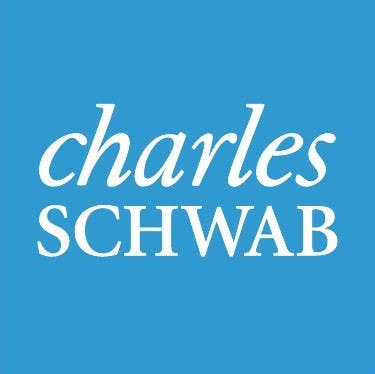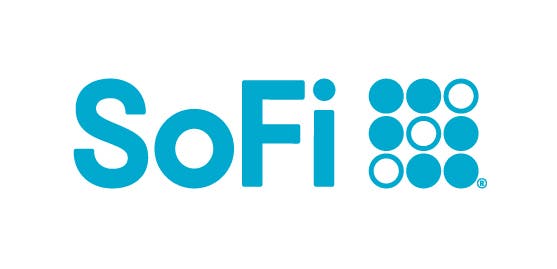Lightspeed review 2023
The Bankrate promise
At Bankrate we strive to help you make smarter financial decisions. While we adhere to strict , this post may contain references to products from our partners. Here's an explanation for .
Lightspeed: Best for
- High account minimums
- Variety of fees, especially for IRAs
- No mutual funds
Lightspeed feels like a Ferrari since it’s primed to do one thing and everything else takes a back seat to that. Lightspeed is geared toward active traders ready to do high-volume stock and options trades, and it’s obvious everywhere, from the broker’s discounted commissions to its lack of mutual funds. This broker is built for traders, so buy-and-hold investors will likely find Lightspeed is not set up to meet their needs, even if in many cases it can handle them. The features that clients have come to expect in other brokers – no account minimum, no minimum monthly commission and plenty of no-transaction-fee mutual funds – are not present here. But like that Ferrari, if Lightspeed meets your needs, it’s going to excel at what it’s designed to do.
Those looking for volume-based pricing discounts and a home for active traders should check out Interactive Brokers, too. Those looking for all-around brokerages should look at Charles Schwab and Fidelity Investments, which offer a great setup for new and advanced investors.

We want to know what you think about Lightspeed
Do you have experience with Lightspeed? Let us know your thoughts.
Lightspeed: In the details

Overview
Lightspeed is all about active traders who can deliver volume to the broker, and so everything is optimized around making the experience the best for them. That means discounted prices for high-volume trades and multiple high-power trading platforms, but it also means no concern for eliminating the nickel-and-dime costs that other brokers routinely slash.
Pros: Where Lightspeed stands out
Headline stock and ETF commissions
One of Lightspeed’s strong suits is its commissions, especially if you can bring some volume to the platform (more below). However, the pricing scheme has a few wrinkles, despite the low headline commissions. You’ll have a choice of two pricing systems for stock and ETF trades:
-
$0.0045 per share, with a $1 minimum: You won’t be able to access this pricing on the WebTrader or mobile platforms, but it’s available on the Lightspeed Trader platform. Discounts apply once you’re trading more than 250,000 shares per month.
-
$4.50 per trade: Per-trade pricing starts at $4.50 and declines once you do 250 trades per month.
So if you want to access per-share pricing, make sure you select the right platform, and each platform has a different account minimum (more below).
If you’re doing a lot of trades, even if it’s not enough to get volume discounts, you may end up better off with Lightspeed’s pricing scheme because you can make up the cost on its order routing and overall better execution. Those elements can matter for traders who need to pay attention to short-term costs. They’re unlikely to be the least bit noticeable for those of more modest means or those investors planning to buy and hold indefinitely.
Discounted high-volume commissions
Regardless of which pricing scheme you’re using, you can enjoy discounted commissions.
Per-share pricing starts at $0.0045 – less than a half-penny and undercutting rival Interactive Brokers – for monthly volume of less than 250,000. Between 250,000 shares and 1 million, you’ll pay just $0.0035 per share. And prices continue falling until you’re trading more than 15 million shares a month, where prices bottom out at just $0.001 – just a tenth of a cent.
It’s a similar setup for those paying per-trade rates starting at $4.50 for fewer than 250 trades per month. Between 250 and 750 trades a month, you’ll pay $4 per trade. And the prices keep falling until you’re doing more than 10,000 trades per month, bottoming out at a price of $2.50.
Lightspeed hits its best per-share price at a lower volume than Interactive Brokers, where you’ll need volume of 20 million shares to get that same $0.001 rate. However, Interactive Brokers cuts its price even further – to $0.0005 – for volume over 100 million shares per month, and it generally offers better per-share pricing at lower volume levels, too.
Discounted options commissions
Lightspeed’s headline rate on options commissions, at $0.60 per contract (with a $1 minimum), is in line with that of TradeStation and a bit better than the industry standard of $0.65 from the major players. Unlike most brokers, Lightspeed offers volume-based discounts on options.
If you’re trading fewer than 500 contracts per month, you’ll pay the headline rate of $0.60 per contract. But pricing is tiered over six levels, and bottoms out at $0.20 per contract, for those trading more than 100,000 contracts.
This structure compares favorably to that of Interactive Brokers, all the way up to the highest level, where IB starts offering contracts at $0.15 a pop. If you’re looking for discounted commissions, E-Trade can reduce fees to $0.50 but at much lower volume, while apps such as Robinhood and Webull offer no-commission pricing, though other features won’t be as good.
But against its main competitors, Lightspeed prices well.
Variety of available trading platforms
One of the surest signs that you’re looking at a broker for more active traders is Lightspeed’s focus on trading platforms and order execution.
Individual traders may feel at home with the core WebTrader and mobile platforms, and neither charges monthly platform or data fees if you qualify as a non-professional. On the web platform, you’ll get real-time quotes, charts and technical studies, market scanners and more. And you’ll be able to trade stock and options here. Meanwhile, the mobile app gives you the ability to quickly place trades and provides real-time analysis of the trading action.
If you’re ready to take it up a notch, you can move to Lightspeed Trader, the flagship platform for stocks and options. This desktop app gives you access to per-share pricing and the ability to customize much of your trading, albeit with higher minimum monthly commissions (more below).
Lightspeed Trader lets you route orders directly to more than 100 destinations, helping reduce order execution times and improve pricing. But this direct access comes with additional routing fees. The app lets you speed order entry with pre-configured settings and hotkeys, while options tools help you see the risk-reward of trades and tease out which options are the most active. You can customize the trading layout so that you have everything where you want it.
Beyond those in-house platforms, Lightspeed also offers specialty third-party trading platforms, many of which let you trade stocks, options and futures. These platforms include Sterling Trader Pro, Sterling Vol Trader, SILEXX OEMS, Eze EMS Pro and Eze EMS Express. Lightspeed offers still other platforms and is open to accommodating platforms it does not yet support.
Cons: Where Lightspeed could improve
Account minimum
Lightspeed actually has more than one account minimum, depending on which of its trading platforms you’re using:
-
Lightspeed Web/Mobile: You’ll need to front $10,000 to get started, though IRA accounts have a $2,000 minimum. But if you’re a pattern day trader, you’ll have a $25,000 minimum.
-
Lightspeed Trader (and others): You’ll need $25,000 to get in the door, or $10,000, if opening a retirement account.
Those minimum levels are far and away higher than those of any other major online brokerage, where the norm is to have no account minimum. And that’s before we get to the fees.
Minimum monthly commission
Unlike every major online broker, Lightspeed charges a minimum monthly commission. Even Interactive Brokers, one of the few that had such a policy, has now given it up.
In Lightspeed’s case, you’ll be on the hook for at least $25 per month in fees if your account balance is less than $15,000. If you rack up commissions of at least that much, then you won’t be assessed any additional monthly fee. Generate less than $25 per month in commissions, and Lightspeed will tack on the difference to your total bill so that you do pay $25 a month.
If you’re working with Lightspeed Trader, however, you’ll need to generate $130 in monthly commissions, excluding fees for market data. Other trading platforms have their own fees, too.
In a brokerage world that has moved on from monthly minimums, it makes little sense to use Lightspeed unless that’s exactly what you need, and it goes double for small accounts.
Other account fees
On top of the monthly minimum, you can also get hit with some of the industry’s highest fees, at least for the more typical things. For example, Lightspeed charges a range of fees for IRA owners:
-
A $20 IRA opening fee
-
A $35 annual IRA fee, which is waived the first year
-
A $95 fee to close out your IRA
These fees have been virtually eliminated at every other online brokerage.
And besides these fees, Lightspeed will ding you for an above-average $95 to transfer out your account positions, compared to a more typical price of $75. And in some cases – among the best brokers – you’ll be able to have your assets transferred out at no additional cost to you.
No mutual funds
Lightspeed is geared toward trading, and so it’s not surprising that it doesn’t offer mutual funds, so if that’s your game, then this point is a dealbreaker for you. Of course, the lack of mutual funds means that Lightspeed doesn’t offer any no-transaction-fee mutual funds, either. They’re a big selling point at many other online brokerages – some of which offer thousands without a transaction fee – allowing you to minimize costs and keep more of your own money.
If no-fee mutual funds are important to you, be sure to check out Charles Schwab and E-Trade.
High-volume rates are not automatically applied
For a brokerage that touts its discounted commissions for high-volume traders, it’s surprising that Lightspeed doesn’t automatically place you in the proper pricing tier when you do reach the levels that offer a discount. You’ll have to reach out to customer support to request a change to your volume-based pricing – annoying – even if it’s unlikely to be a problem for most traders.
No fractional shares
At this point, it’s probably no shock to see that a brokerage geared for traders does not offer fractional shares, a feature more suited to beginners and long-term buy-and-hold investors. The ability to buy partial shares or reinvest your dividends in them remains a popular feature and allows you to get all your money compounding for you as soon as possible.
Review methodology
Thank you for sharing your experience with Bankrate

















